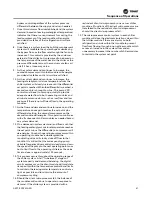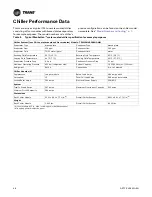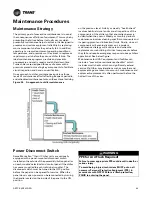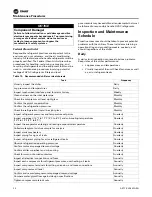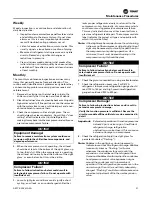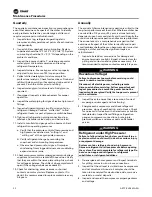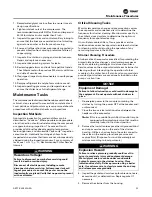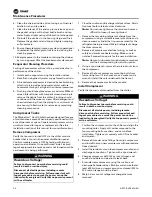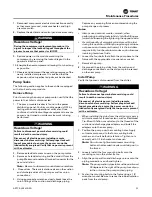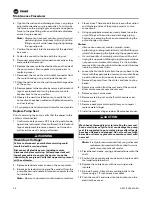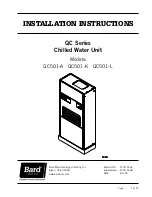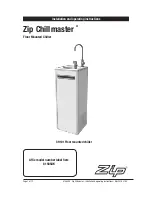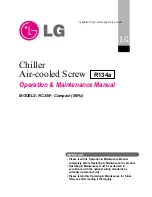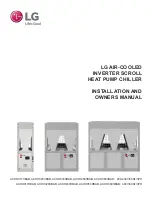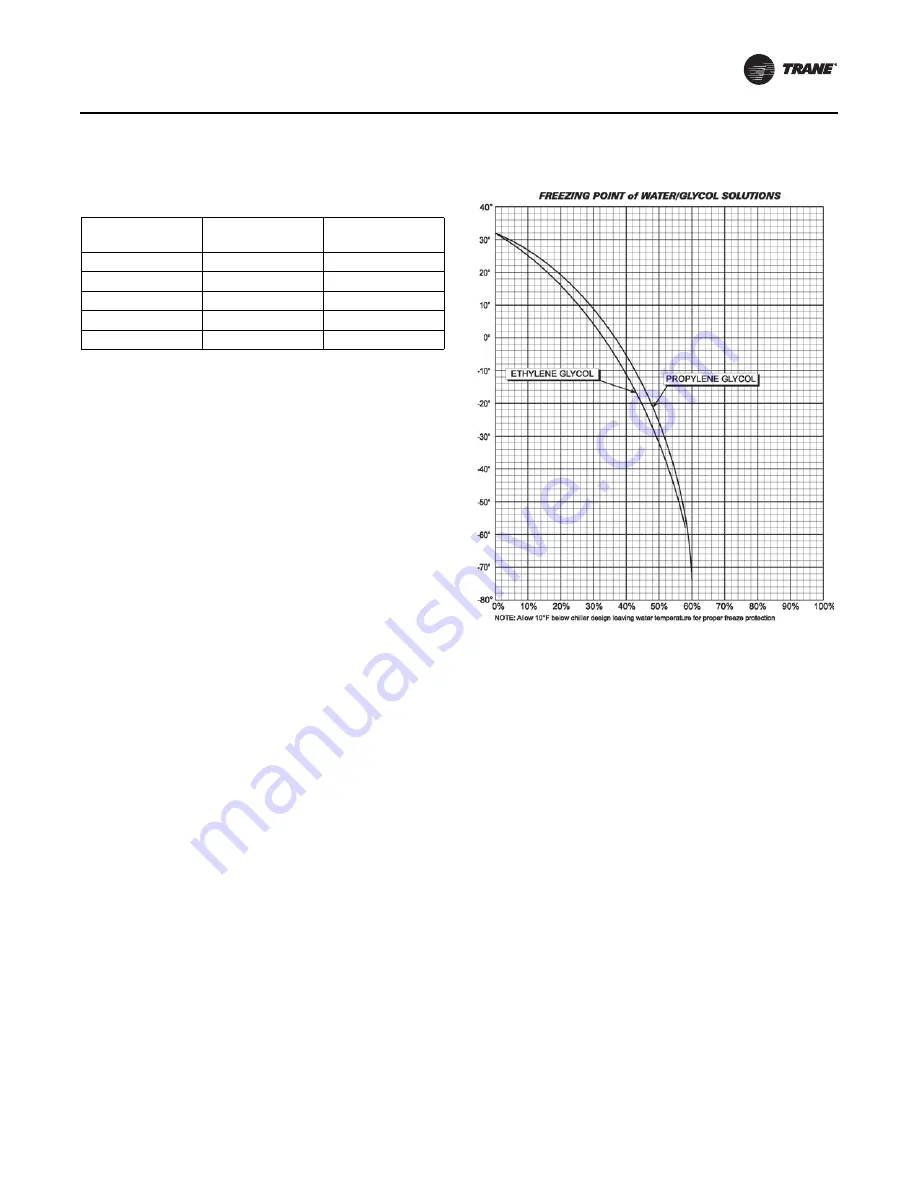
Operating Procedures
ARTC-SVX002A-EN
41
water solutions become slushy during freezing. As the
temperature falls, the slush becomes more and more
viscous and finally fails to flow.
The precise concentration of glycol for a particular chiller
is affected by several key factors such as ambient
temperature extremes, entering and leaving water
temperatures, and chiller size. A chiller’s optimum glycol
concentration is modified by these considerations as
reflected in above Table, Glycol Performance Impact
Factors. These capacity correction factors are the “best
informed estimates” for chillers with copper evaporators.
The percentages may vary depending on the materials
and alloys of the heat exchangers, total surface area, the
amount of present or future fouling, and the brand of
glycol used.
The calculations in this table are most accurate for
Dowfrost (propylene glycol) and Dowtherm (ethylene
glycol) branded products. Consult your local supplier or
engineering contractor for more precise
recommendations.
Storage Provisions
The chiller controls are designed for storage in ambient
temperatures from -20 °F (-29 °C) to 145 °F (63 °C) with
relative humidity from 0% to 100%. The glycol should be
removed from the chiller if the unit is to be stored for
extended periods. Although fluids can be drained via the
plug in the bottom of the evaporator, the inhibitors in an
approved glycol solution will best protect the surfaces of
the evaporator against oxidation if the glycol remains
inside the chiller during storage.
Table 8.
Freeze protection chart
Water/Glycol
Temperature
Freeze Protection Burst Protection
20 °F (-7 °C)
18% glycol mixture
12% glycol mixture
10 °F (-12 °C)
29% glycol mixture
20% glycol mixture
0 °F (-17.8 °C)
36% glycol mixture
24% glycol mixture
-10 °F (-23 °C)
42% glycol mixture
28% glycol mixture
-20 °F (-29 °C)
46% glycol mixture
30% glycol mixture
Figure 19.
Water/Glycol concentration freezing points
(in degrees fahrenheit)





















